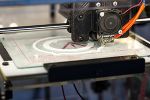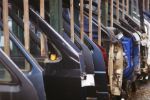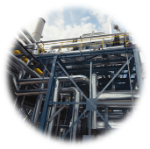____________________________________
Industrial Liaison Group:
Tel: +44 (0) 1235 778797
E-mail: [email protected]
 Innovation and advanced design approaches by engineers can solve complex real-world challenges.
Innovation and advanced design approaches by engineers can solve complex real-world challenges.
Increased insight can be achieved by improving the materials and processes used in the manufacturing route or measuring parameters such as stress and strain directly to validate computational models. Additionally, in the event of catastrophic failure of the engineering system, a forensic method is often needed to re-engineer the component or system.
Diamond provides specialist analytical techniques for the atomic to microscale characterisation of materials ranging from high-performance components and devices through to diagnostic tools and drug delivery technologies.
Below are some examples of how these techniques have been applied.

Additive manufacturing (AM), was originally used for creating prototypes, but is now being adopted to create fully functional products. This method of manufacturing allows us to create complex shapes, to exact measurements. It works by fusing together metallic, ceramic or other powders into detailed 3D shapes, layer by layer, using laser light. During traditional manufacturing routes, like casting or forging, microstructures are formed over seconds to minutes. During AM, the intense laser heating melts and solidifies the materials in milliseconds, forming very different microstructures.
Read more...
The automotive industry typically uses steel sheets for the bodywork of cars which is cut to the size of the part (i.e. roof, door or bonnet) and then stamped into the precise shape required. Although steel is a commonly-used material, the exact behaviour of the metal’s crystalline structure during these forming processes has yet to be fully mapped. By understanding how the ‘steel crystals’ react when undergoing stamping, new alloys could be created that offer greater flexibility and strength which might allow more complex shapes to be formed.
Read more...
Rolls-Royce apply a surface treatment to the base of the fan blades on some of their Trent engines to provide additional integrity margins by reducing the potential for initiation and propagation of cracks. During development of one of their latest turbofan engines, the Trent 1000, researchers from Rolls-Royce needed a material characterisation method so that they could assess the effectiveness of the local surface treatments.
Read more...
Luxfer Gas Cylinders have been manufacturing high-pressure self-contained breathing apparatus (SCBA) and life-support cylinders for fire-fighters and first-responders since the early 1970s. Cylinders are required to be increasingly lightweight, efficient and safe storage solutions. Advanced carbon fibre-wrapped aluminium construction methods and a fabrication process called autofrettage aim to reduce weight and increase maximum working pressures of cylinders. However, since cylinders can be exposed to demanding conditions, it is critical that their structural integrity be maintained.
Read more...
”Corrosion resistant” metals are used in challenging environments and where safety is critical, such as in pipelines, aircraft and nuclear waste storage vessels. But it is precisely these materials that are vulnerable to a form of corrosion known as pitting. Understanding of the mechanisms by which these pits form and propagate may allow engineers to build more accurate models of corrosion to predict the lifetime of components and plan when they need inspecting or replacing.
Read more...Diamond Light Source is the UK's national synchrotron science facility, located at the Harwell Science and Innovation Campus in Oxfordshire.
Copyright © 2022 Diamond Light Source
Diamond Light Source Ltd
Diamond House
Harwell Science & Innovation Campus
Didcot
Oxfordshire
OX11 0DE
Diamond Light Source® and the Diamond logo are registered trademarks of Diamond Light Source Ltd
Registered in England and Wales at Diamond House, Harwell Science and Innovation Campus, Didcot, Oxfordshire, OX11 0DE, United Kingdom. Company number: 4375679. VAT number: 287 461 957. Economic Operators Registration and Identification (EORI) number: GB287461957003.